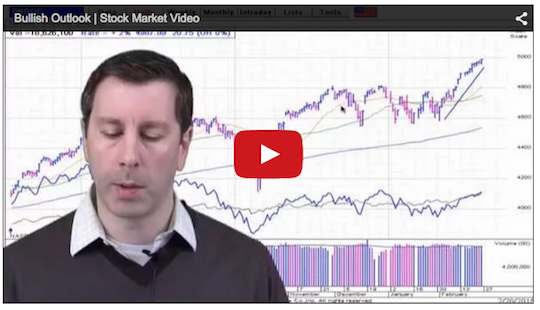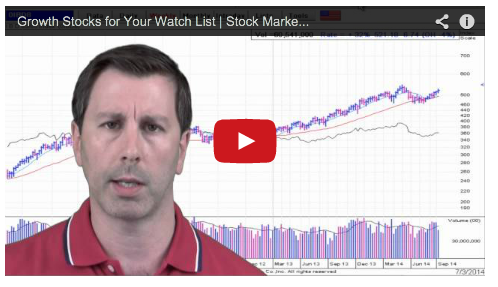One Cheap Growth Stock OUTR Cabot Investing
Post on: 5 Август, 2015 No Comment

A Key Charting Tool
Using Relative Strength in the Gold Sector
A Cheap Growth Stock
In the investment world, certain words get thrown around so often that they eventually lose their meaning. I’m as guilty of that as anyone-I’m a growth investor, so I use relative strength and fundamental analysis, and look for stocks with strong, positive momentum and charts showing signs of accumulation.
While things like accumulation and relative strength sound great, many investors have no clue what they actually mean. So today I’m setting out to clear up one key aspect of chart reading-relative strength-and show you a few ways to use it.
Relative strength is just what it sounds like: It tells you how a stock is doing relative to the market (or a sector or some other benchmark). There are many ways to measure and interpret relative strength. I tend to focus on three.
The simplest way is measuring how a stock has performed during the past six or 12 months, and then rank every stock from top to bottom. Personally, I like to focus on stocks that are in the top 20% to 30% in this metric, with a few exceptions (like recent IPOs, which don’t have enough history to compare). History shows that many big winners have high ranks on this metric before (!) they launch their big runs.
The second measure I look at is relative performance (RP) lines, which all subscribers to Cabot Top Ten Trader or Cabot Market Letter (and some of our other advisories) have seen. RP lines graphically depict how a stock is doing relative to the overall market-sideways means a stock is performing equal to the market, up means outperforming, down means underperforming.
When hunting for stocks, I look for uptrending RP lines, preferably with shallow and short pullbacks along the way, which indicates persistent buying. That said, if a stock has built a great launching pad for a few months, I’m OK with an RP line that’s flat, as long as it’s near its months-ago peak.
—Advertisement—
10 Buy and Forget Retirement Stocks Poised for Big Gains
Individually, they could hand you 35% to 50% annual total returns. Together, they could secure your financial future in 2015.
Find out the full story and receive your free copy of our $1 Million Retirement Blueprint featuring these top 10 stocks for the next year.
The first two ways to use relative strength are filtering mechanisms-in other words, I want a stock to have generally outperformed most other stocks during the past six to 12 months, and I want the RP line to be at or near a new high. If not, I look elsewhere.
The third way I use relative strength is a bit different-I like to compare the charts of a group of stocks with each other, seeing how each has acted during the past few important low and high points in the market (or sector). It’s a great way to separate the wheat from the chaff.
For instance, let’s take a look at the gold stocks. The Market Vectors Gold Mining Fund (GDX) topped out at 67 in 2011 and plunged as low as 16.5 by early-November 2014. Since then, it’s shown signs of life, hitting a higher low during the market’s mid-December slide (at 17.1), and is now standing at three-month highs and taking aim at its long-term 200-day line. Here’s the chart:
If you’re interested in gold stocks, examining the relative performance of individual stocks can tell you a lot. I perused a bunch of the well-traded names (no penny stocks allowed) in the group. Some, like Barrick Gold (ABX), look weak-it actually hit a lower low in mid-December and remains miles below its 200-day line. It’s a laggard.
And some, like Newmont Mining (NEM). look better-it’s firmly above its swing high of 20.5 and is approaching its 200-day line. But it too hit a slightly lower low in mid-December (remember, GDX hit a higher low).
But others, like Randgold Resources (GOLD). look much better! (See chart below.) Not only did it hit a higher low in mid-December, is well above its swing high of 71.4, and importantly, is already above its 200-day line, well ahead of the overall sector!
I’m not telling you to go jump on Randgold here, but if gold stocks enter a true, sustained uptrend, relative strength analysis tells me that GOLD will be among the best performers. Let’s see how it plays out in the weeks ahead.

As for growth stocks, we have an interesting situation playing out now. On the one hand, the market is as choppy as I can ever remember, and little money is being made unless you’re buying and selling every day or two (and even then I doubt any money is being made).
That said, I’m still seeing a decent amount of stocks setting up in multi-month basing structures (many have been basing since March 2014). While the market looks dicey here, I know that if earnings season goes well, I really think some powerful new growth leadership could emerge.
But, for my part, I think the right move now is mainly about watching and waiting for new, powerful breakouts-building a watch list of potential winners that can lift off if (and only if) the bulls step up to the plate.
One solid idea that falls a bit outside the growth stock spectrum is Outerwall (OUTR). the company that used to be known as Coinstar, which has morphed itself into an incredible cash cow. Here’s what I wrote about it in last week’s Cabot Market Letter:
Outerwall (which changed its name from Coinstar to represent its broader product line) made its name with the green Coinstar coin-counting machines in supermarkets, then followed up with the Redbox kiosks that rent movie and game DVDs on a daily basis. Its ecoATM machines take old cell phones in exchange for cash. Management has said that it’s standing pat with its network of 44,000 Redboxes and over 20,000 Coinstars, has hiked prices, and is concentrating on converting its substantial free cash flow into shareholder value. A share repurchase plan snapped up 5% of the company’s stock in the latest quarter alone and the share count is down 31% from the prior year. With a bargain-basement 13 P/E ratio, and a stock that’s zoomed from 51 in mid-October to 73 in recent trading, OUTR has much more upside potential.
Due mostly to cost controls and share buybacks, earnings are expected to rise to a whopping $8 per share this year, up about 30%, and management has indicated it continues to see share repurchases as a good investment given the bargain valuation. With shares in a solid uptrend (they’ve barely pulled back at all recently, a great sign), I think a small position in the mid-70s can work, but a protective stop around 68 makes sense in case the market takes a turn for the worse. Earnings for OUTR are due out February 5.
For more updates on Outerwall and to find out about additional stocks on my watch list, consider taking a risk-free trial subscription to Cabot Market Letter.
Working to make you a better investor,
Michael Cintolo
Chief Analyst, Cabot Market Letter
And Cabot Top Ten Trader














